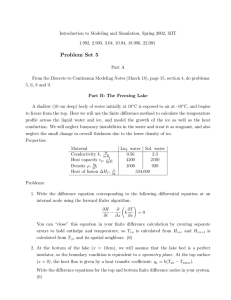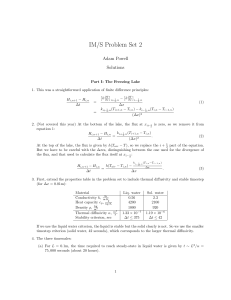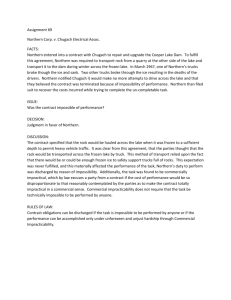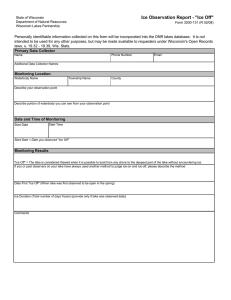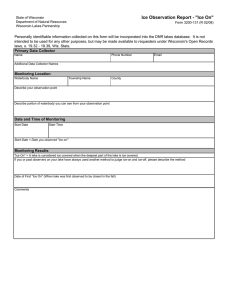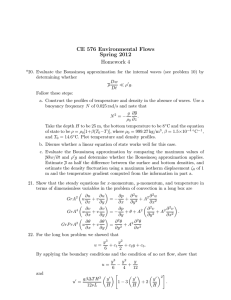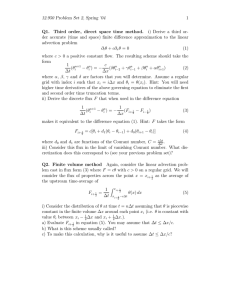IM/S Problem Set 2 Adam Powell Due March 10, 2006
advertisement
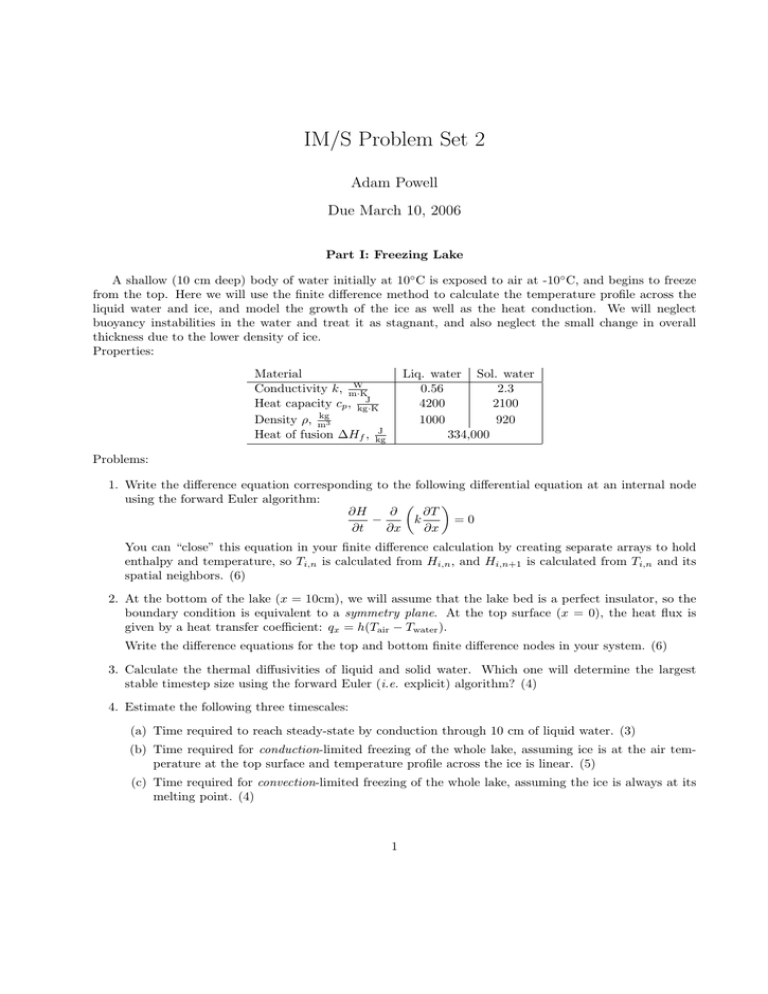
IM/S Problem Set 2 Adam Powell Due March 10, 2006 Part I: Freezing Lake A shallow (10 cm deep) body of water initially at 10◦ C is exposed to air at ­10◦ C, and begins to freeze from the top. Here we will use the finite difference method to calculate the temperature profile across the liquid water and ice, and model the growth of the ice as well as the heat conduction. We will neglect buoyancy instabilities in the water and treat it as stagnant, and also neglect the small change in overall thickness due to the lower density of ice. Properties: Material W Conductivity k, m·K J Heat capacity cp , kg·K kg Density ρ, m3 J Heat of fusion ΔHf , kg Liq. water Sol. water 0.56 2.3 4200 2100 1000 920 334,000 Problems: 1. Write the difference equation corresponding to the following differential equation at an internal node using the forward Euler algorithm: � � ∂H ∂ ∂T − k =0 ∂t ∂x ∂x You can “close” this equation in your finite difference calculation by creating separate arrays to hold enthalpy and temperature, so Ti,n is calculated from Hi,n , and Hi,n+1 is calculated from Ti,n and its spatial neighbors. (6) 2. At the bottom of the lake (x = 10cm), we will assume that the lake bed is a perfect insulator, so the boundary condition is equivalent to a symmetry plane. At the top surface (x = 0), the heat flux is given by a heat transfer coefficient: qx = h(Tair − Twater ). Write the difference equations for the top and bottom finite difference nodes in your system. (6) 3. Calculate the thermal diffusivities of liquid and solid water. Which one will determine the largest stable timestep size using the forward Euler (i.e. explicit) algorithm? (4) 4. Estimate the following three timescales: (a) Time required to reach steady­state by conduction through 10 cm of liquid water. (3) (b) Time required for conduction­limited freezing of the whole lake, assuming ice is at the air tem­ perature at the top surface and temperature profile across the ice is linear. (5) (c) Time required for convection­limited freezing of the whole lake, assuming the ice is always at its melting point. (4) 1 For 4b and 4c, you can model the freezing process by setting the heat flux required to freeze at a certain rate equal to the heat flux due to conduction or convection: ρΔHf dX ΔT =k or = hΔT dt X and solve the resulting differential equation to determine thickness frozen X vs. time t. 5. Using at least ten nodes in the x­direction, perform a finite difference calculation to predict the temper­ ature profiles throughout the freezing process with a top heat transfer coefficient of 10 mW 2 ·K . Provide plots at the times when the top of the lake just starts to freeze, when the lake is half frozen, and when the lake has just finished freezing.1 (12) Part II: Cast­A­Box The castabox software required for this problem is provided as a supporting file in the assignments section You can run it on Linux and Solaris workstations using: add 22.00j castabox ­help 1. Run castabox with its default geometry and boundary conditions, and capture (and submit) a couple of temperature plots and their associated times, particularly one when the top surface is just fully frozen. (You may find the program xv useful for grabbing window snapshots.) Document the temperatures represented by each contour surface. (8) 2. If the top surface freezes with liquid trapped beneath it (as you should find under the default con­ ditions), solidification shrinkage will lead to the formation of a shrinkage cavity. (Ice, silicon, and certain other materials have the opposite problem: expansion during solidification of trapped liquid can fracture the casting.) Propose a design change which will produce a fully­solid box casting of the same geometry and material (i.e. same properties). Show with a castabox simulation that your design change is likely to work, by again capturing a couple of temperature plots, particularly when the top surface is just fully frozen. (12) 1A spreadsheet which performs this calculation is provided as a supporting file in the assignments section, but due to the large number of timesteps required and the computational inefficiency of spreadsheets, it may take a long time to run; a C, FORTRAN or Matlab implementation will run several times faster. 2
